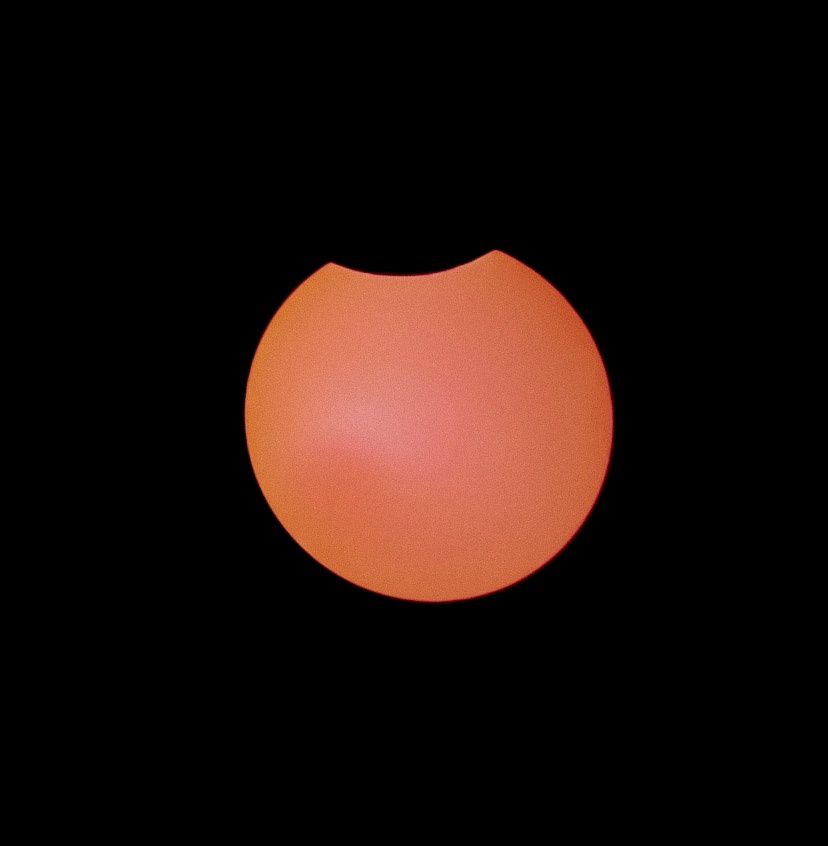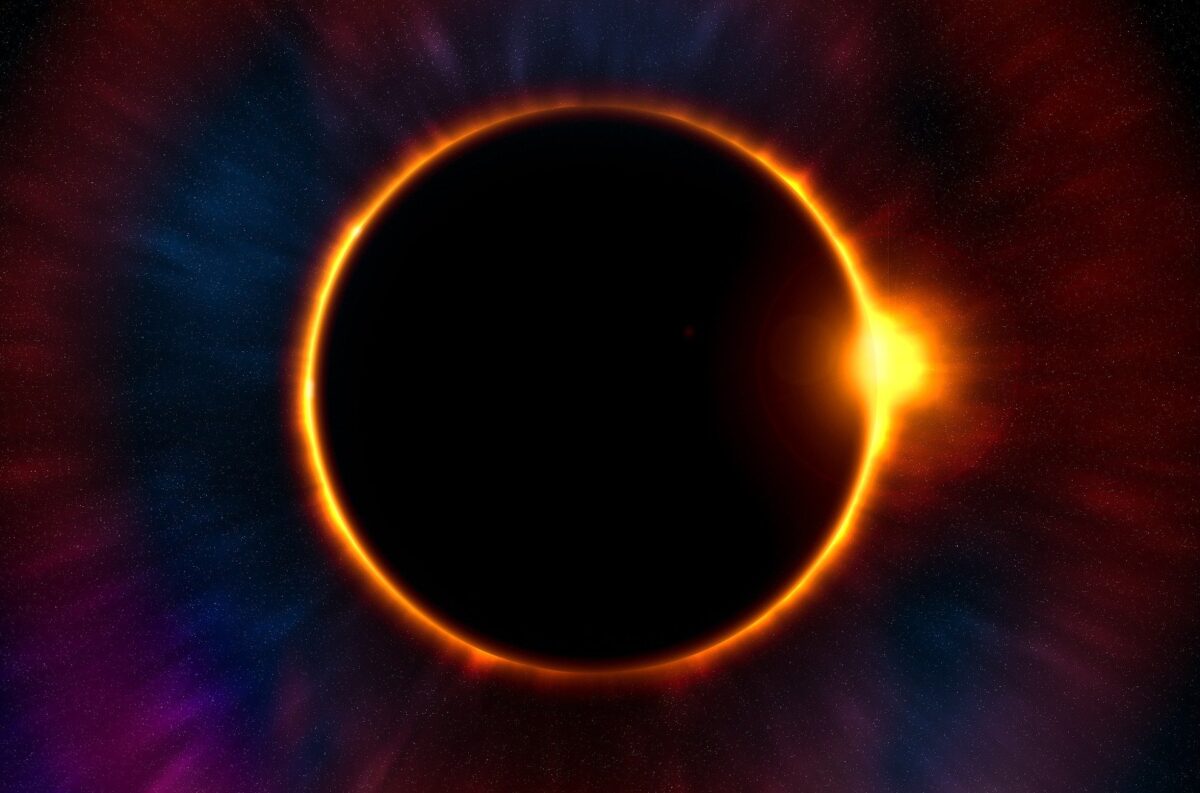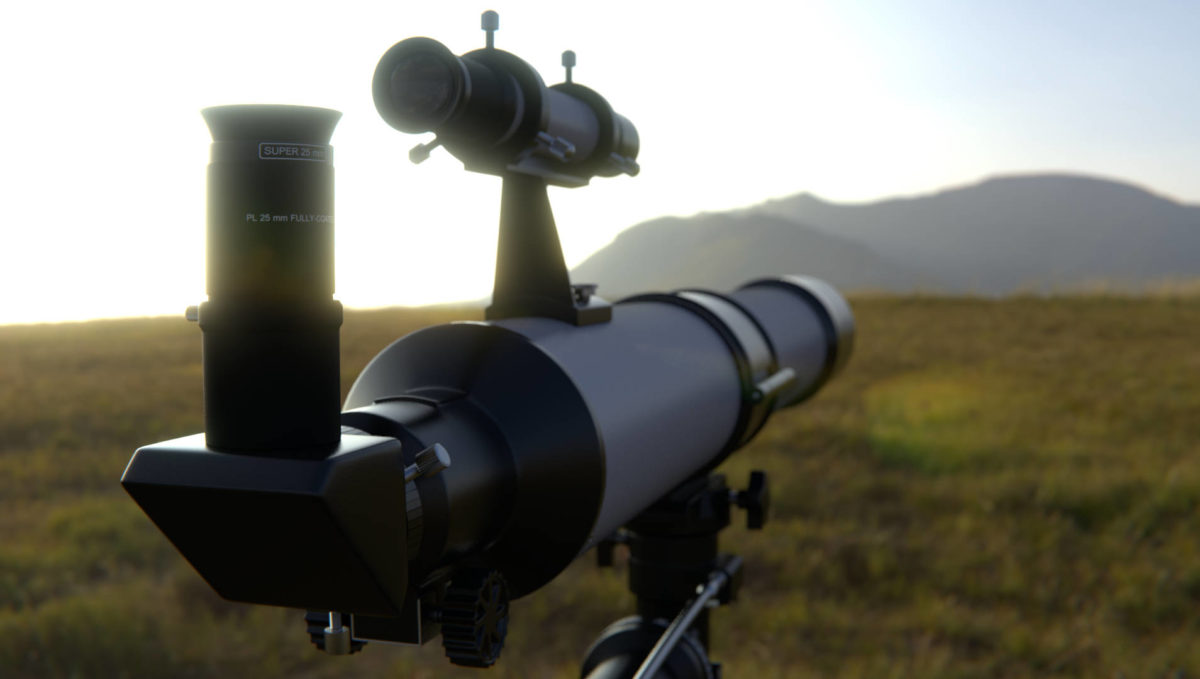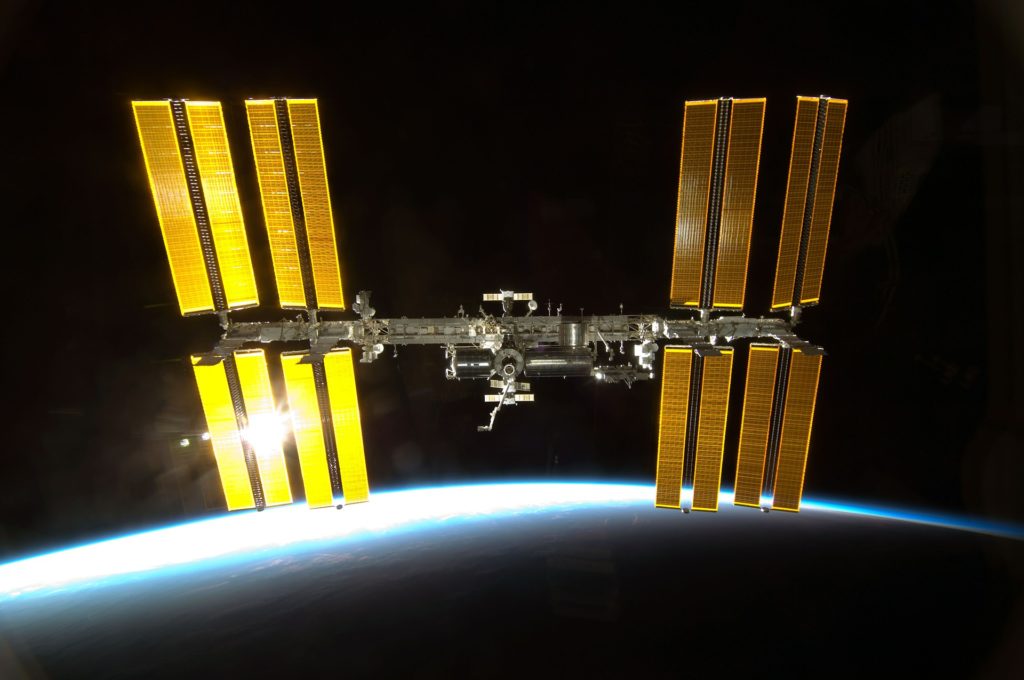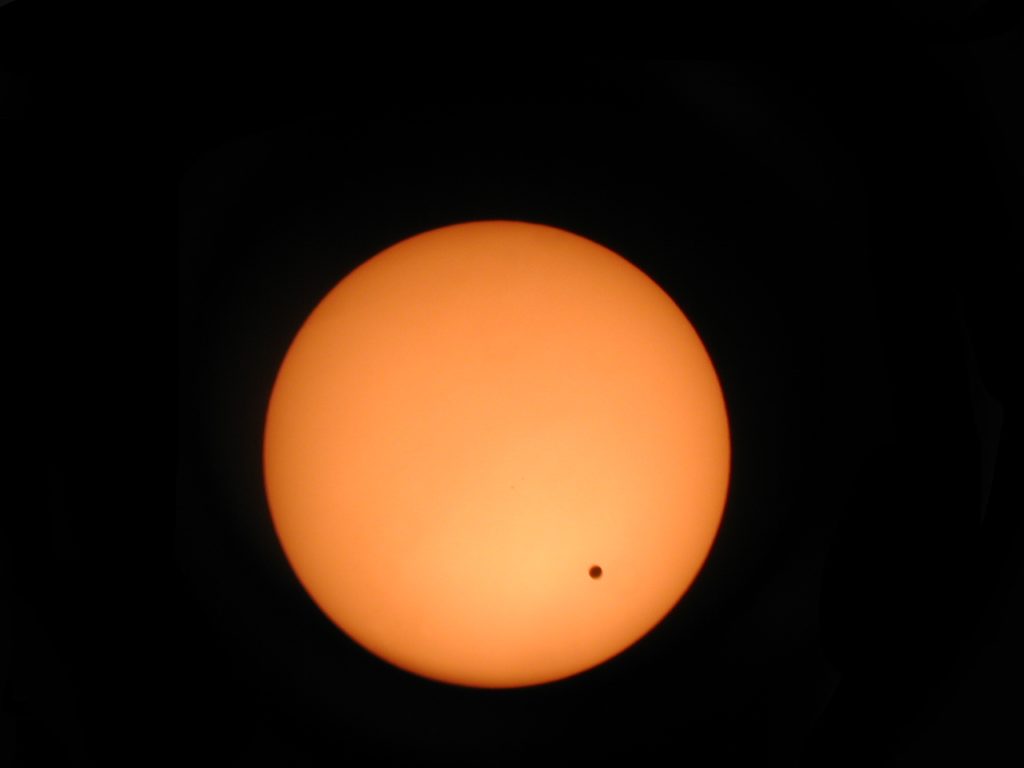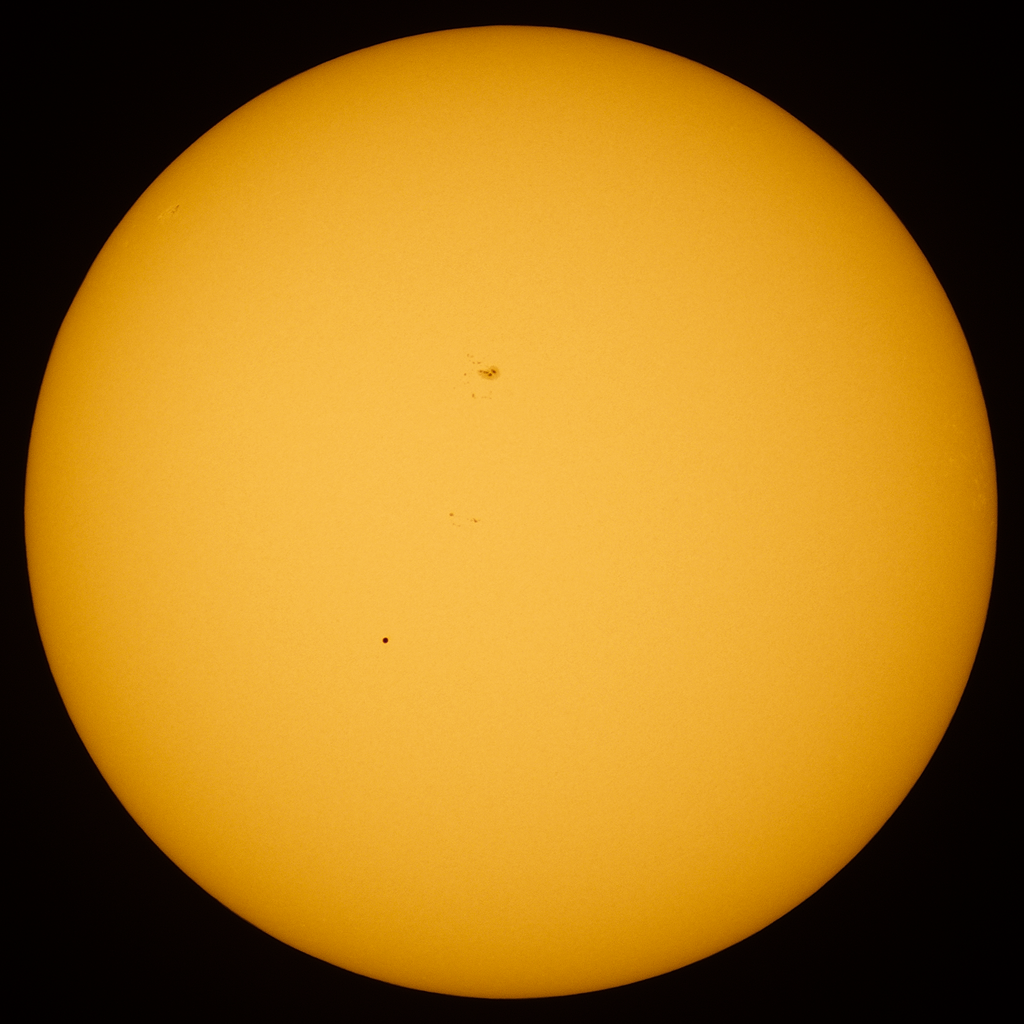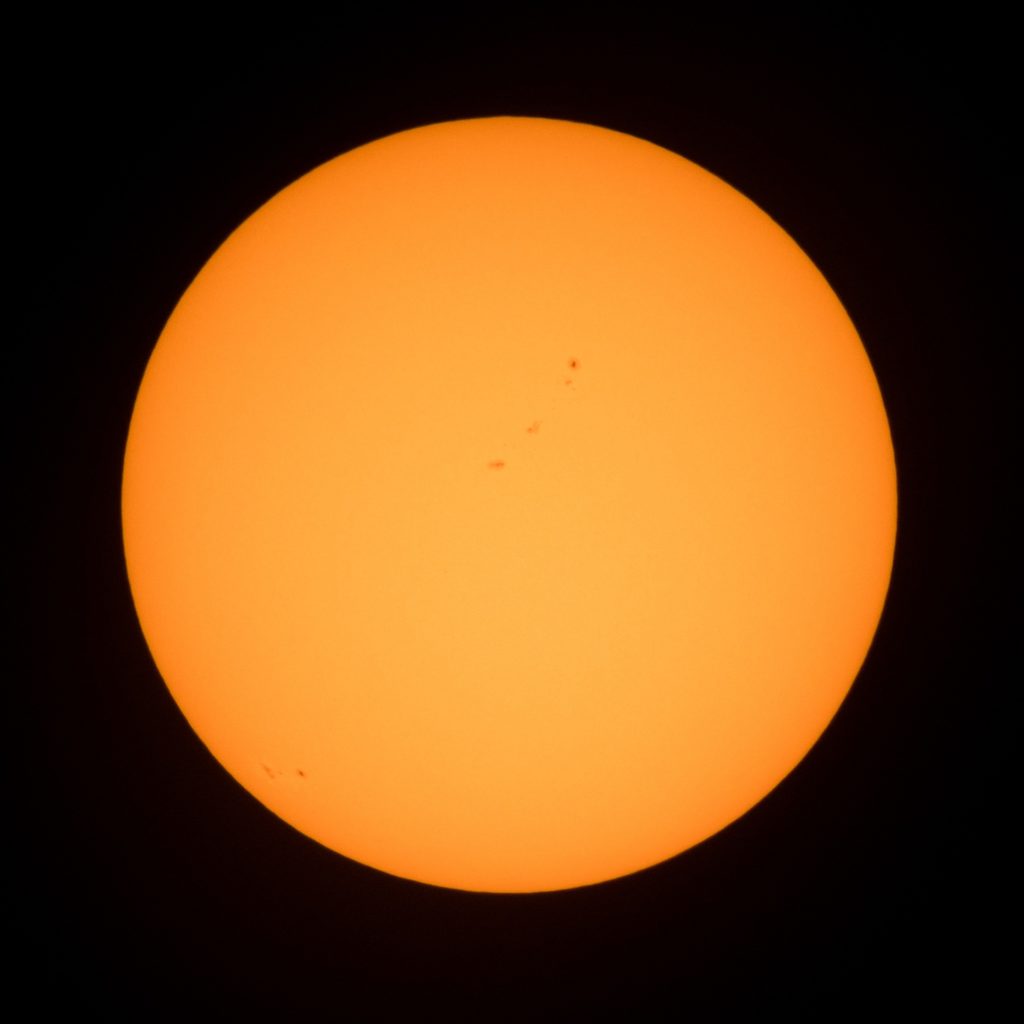A solar eclipse occurs when the Moon, in it’s own movement, finds itself between the Earth and the Sun. One of the consequences of this alignment will be the blocking of a part (or all) of the Sun’s light here on Earth, in areas where the eclipse is visible. This is due to the fact that the Moon covers the Sun’s disk partially, or sometimes even totally.
Solar eclipses can thus be of two types: partial (when the Moon covers only part of the Sun’s disk) or total (when the Sun’s disk is covered completely by the Moon).
Total Solar eclipse
A total solar eclipse, which is the most dramatic – because the sky turns dark just like at night for a few minutes during mid-day – is much more rare, as the conditions needed for such an eclipse to occur, are much more strict.
For a total eclipse to occur, the Moon needs to be closer to the Earth on its elliptical orbit, so that its apparent size can be large enough to cover the Sun’s disk. In addition, the totality (the period of only a few minutes when the Sun is completely covered by the Moon) occurs only along a very narrow path along the Earth’s surface.

Annular and partial Solar eclipses
So, most of the Solar eclipses are not total!
But even if the Sun’s disk is not covered completely by the Moon, the concentricity of the two disks can create another beautiful Solar eclipse – an annular one, when the Sun is visible around the moon, just like a ring – hence its name!

However, most of the times a Solar eclipse will be partial, when the Sun’s disk will be partially covered by the Moon, and not in a concentrical manner. This is the most common type of Solar eclipse that we see.

Visibility of a Solar eclipse
One solar eclipse (be it partial, annular or total) can’t be visible from everywhere on Earth. The Sun needs already to be visible – which narrows down the visibility of an eclipse to less than half of our planet! As the relative positions of the Moon and Sun in the sky, seen from our planet, are always changing, the alignment of the two for an eclipse to occur, narrow its visibility down even more.
Sizes of the Sun and the Moon
The Sun is much bigger than the Moon, that’s for sure. So how can it be completely covered by the Moon then?
To answer this question, we need to look at the distance of the Sun and Moon, from us, from our planet. The Sun is much more far away from Earth than the Moon is! Which makes it have an apparent size more or less equal to the apparent size of the Moon! The Moon moves along an elliptical orbit around Earth, which makes it, at times, be closer to our planet. Which translates itself into a bigger apparent size of the Moon, which actually becomes slightly larger than the Sun’s apparent size. Which finally, can lead to a total Solar eclipse, if the other conditions for this event to occur, are met!
Looking at an eclipse
Warning! Never look at a solar eclipse with the naked eye. Not even sunglasses aren’t enough! In order to see a solar eclipse, you need a special solar filter, which makes it safe to look directly at the Sun. Otherwise, you risk getting extreme eye damage, and even blindness!
The Annular eclipse of 10 June 2021
On June 10 this year, an annular solar eclipse is scheduled to occur! The actual annular eclipse will be visible from a narrow band along Earth, which crosses the North Pole and a few far-North regions of Canada and Russia.
In the rest of the Northern Hemisphere, the eclipse will be a partial one and will be visible from places such as the Eastern part of the US, almost the whole of Europe and parts of Asia.
If, by any chance, you’ll find yourself in Vadsø, you will see a partial Solar eclipse, with a maximum obscuration of 51%, occuring at 13:09, Norway time.
For other location and times, check out this map from NASA to see exactly where on Earth the eclipse will be visible from, in 2 days!
And by the way, did you know that with Aurora Labs you can discover the mysteries of our own Sun by observing it through our telescope? The eclipse seen through a telescope (with a special solar filter, of course!) is a magnificent sight!
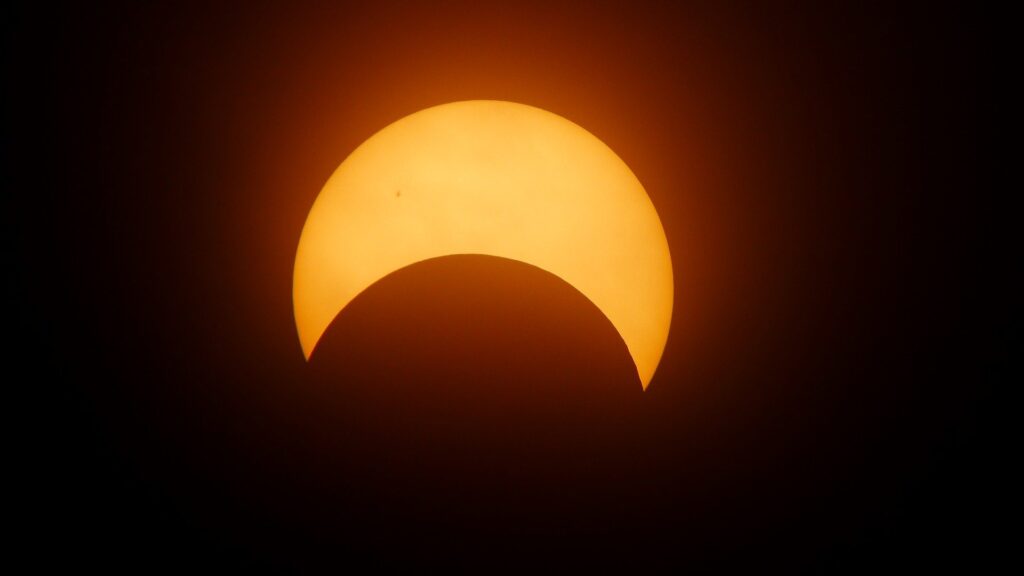
Update June 10, 2021:
